I keep two kinds of diary when I travel. My photographs catalogue my visual noticings, light and color, shape and form. My notebooks catalogue my literary noticings, things people say and how they say them, my questions and some answers, smells, sounds, flavors.
Sometimes, most times, wine trips are a whirl, sweeping me from one event the next with scant time for reflection. But my visual and verbal recorders are always on, capturing the kaleidoscopic blur.
It’s only after I’ve returned to my office that I can begin to process the discoveries. These two different catalogs, visual and verbal, are complementary and contingent; neither stands alone, both are essential. Using them helps me understand what I experienced, how it fits together, and what it might mean about the place and its wines.
Over the last two decades, I’ve interlaced my published articles with text and photos, using those two dimensions to try to tell a more complete story. Even so, the words have always done the heavy lifting, because I’m a writer, and because photos can’t tell you what wines taste like. (I’m increasingly convinced that words can’t tell you, either. Wine must be tasted to be understood.)
But I’m not only a writer.
I originally trained as a studio artist, in paint and mixed media and, appallingly, sculpture. I studied art history, both Western and non-, material culture, and the philosophy of art. I spent a semester in Florence immersed in the art of the Renaissance.
In college I worked in a graphic design studio, which set me up for a career in digital communications. The field demands a mix of analytical and visual skills, but doesn’t have much use for oil paint, so my art tools grew rusty for a couple of decades.
Five years ago, at the dawn of the pandemic, I picked up my tools again, polished and oiled them, and rediscovered their feeling in my hands. I resumed oil painting. I resumed life drawing from a live model. I resumed digital painting. I’d first experimented with digital in 1988 or 1989, and the results were as rudimentary as the nascent medium. But digital has since evolved significantly, along with its ecosystem of hardware, software, and accessories, and it’s now well tuned to the needs of visual artists. As with any expressive medium, there is a steep learning curve, and even after thousands of hours with my iPad, Apple Pencil, and an app called Procreate, I feel I’m just getting started.
Digital painting is real painting. Let’s be clear about that. It recruits the same skills needed for physical painting, foremost among them the ability to draw. It demands competency in the myriad formal techniques demanded by picture making: composition, contrast, color, value, volume, etc. It likewise invites the artist into the pursuit of a larger idea, which might be primarily visual but is also personal, political, social, or spiritual.
Digital painting is real painting.
That last part, the pursuit of an idea, is most perilous, regardless of artistic medium. Sometimes the process of artmaking feels, to the artist, like the whole point, but the results, the art product, still must have some reason to be or be seen. When an artist tries too hard to put that reason in, the results start to feel like polemic, and the work visually unravels.
Digital painting does differ from oil painting in significant ways. It is less messy, wasteful, expensive, and toxic, which I appreciate. But it’s also constrained by the small scale of the tools, which I don’t. I’d love to paint on a tablet the scale of my big oil canvases, but in the meantime, I’m constrained to a 12.9” screen and output from a fine art print shop at the largest size I can afford. In this way digital artists are a lot like photographers, who must rely on expert printers to put their vision onto a wall.
It was inevitable that I would start making illustrations for wine articles, with drawings in place of photography. I’ve now published three visual essays like that, on Gravner, Port, and Montefalco. I’ve also done commissioned cover illustrations for other wine and literary magazines. I might use my photos as reference and source material, but I invent, modify, and combine images to suit my aims. Illustration lets me apply a consistent palette and technique that unifies the imagery. It also sets up an equivalency, with all subjects treated as equals. I may have met her in the bright vineyard, and him in his dank cellar, but she doesn’t end up looking more sunny, and he doesn’t end up looking more dour.
It is twice the work: write the story, make the images. Or maybe three or four times the work, because painting takes far longer than writing. And that’s all before I get into production for the website.
But I like the intangible benefits. The image-making is intensifying, demanding deep seeing, deep noticing. As I make choices about composition, what to highlight and what to omit, I see things I’d missed before: a winemaker’s injured thumb, another’s pricey suit, the pack of cigarettes in a hip pocket, the way she talks with her hands. It puts me closer to my subject. In this way, the work benefits me as much as the viewer.
Still, the illustrative style can feel impoverished. Illustration is a spare craft, requiring the details of a scene to be flattened and smoothed in service of more critical considerations. I wanted to try something painterly and naturalistic, more effulgent, more alive.
Which brings me to this series.
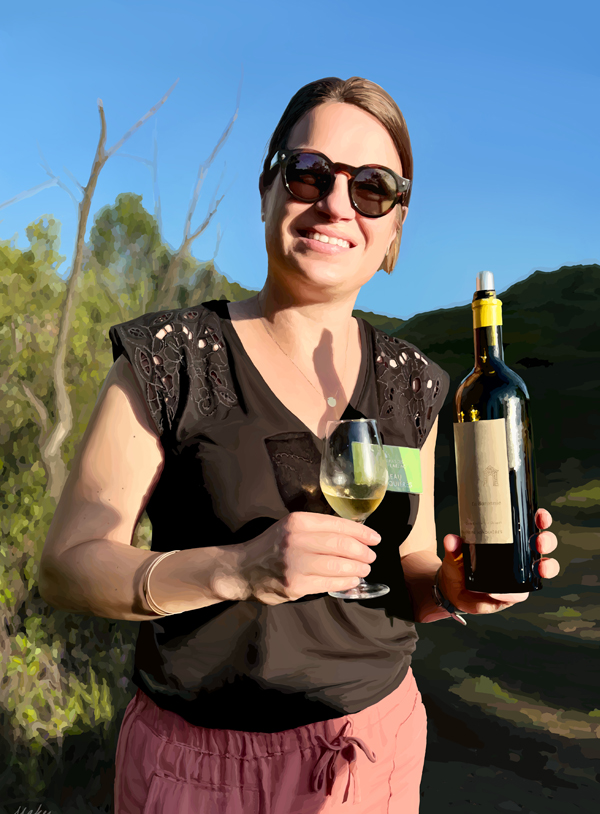
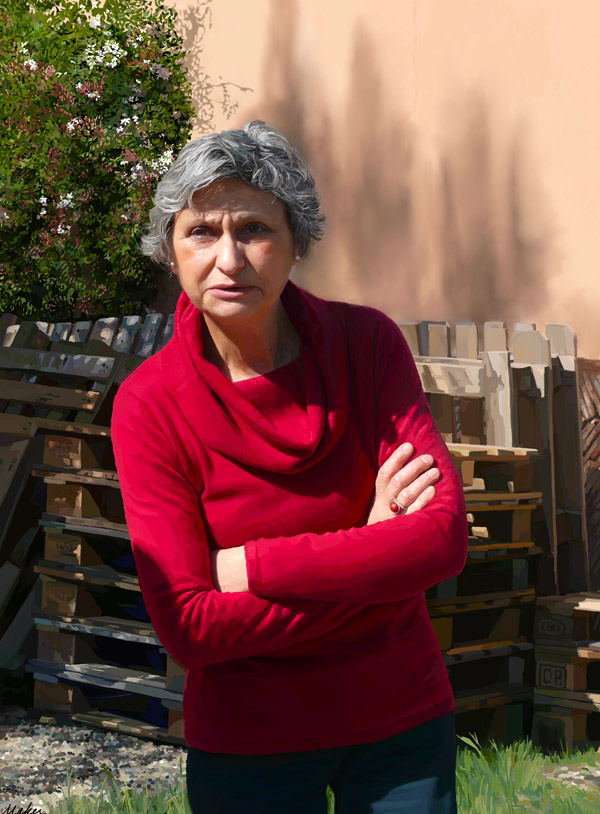
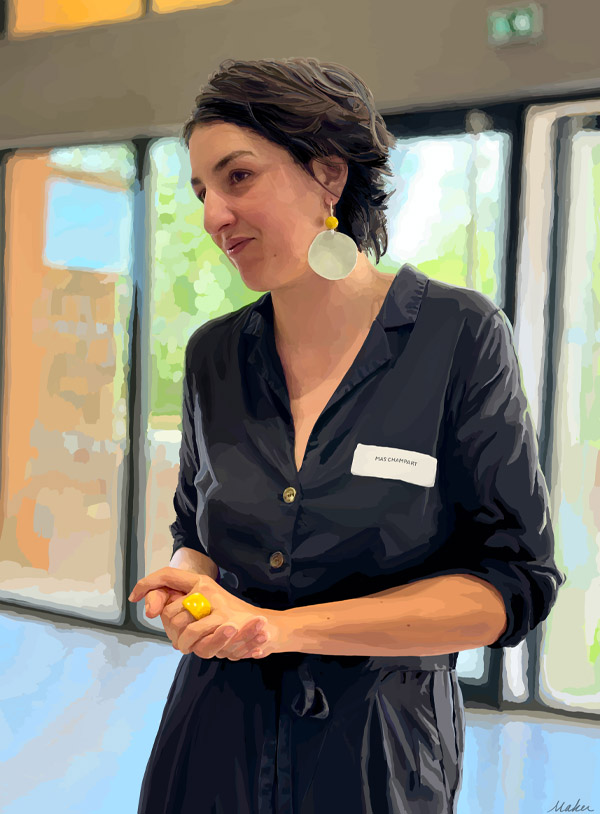
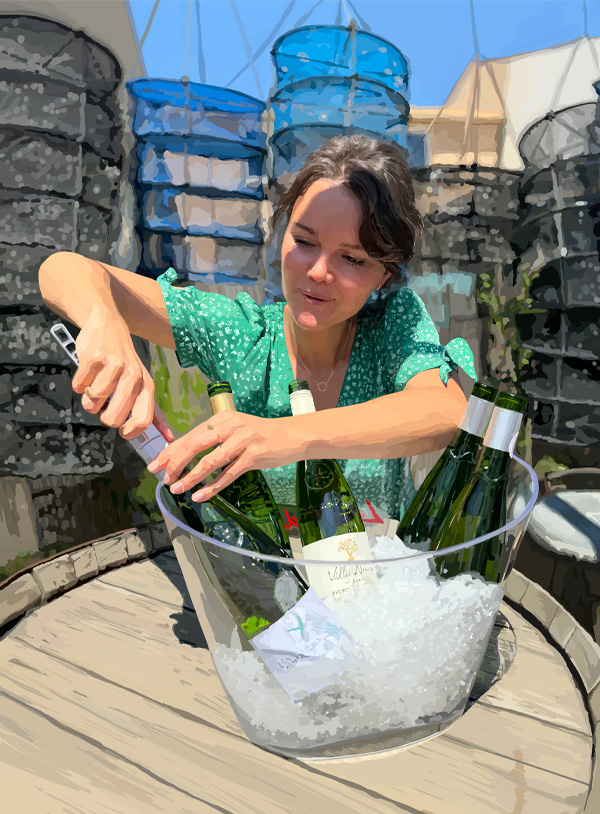
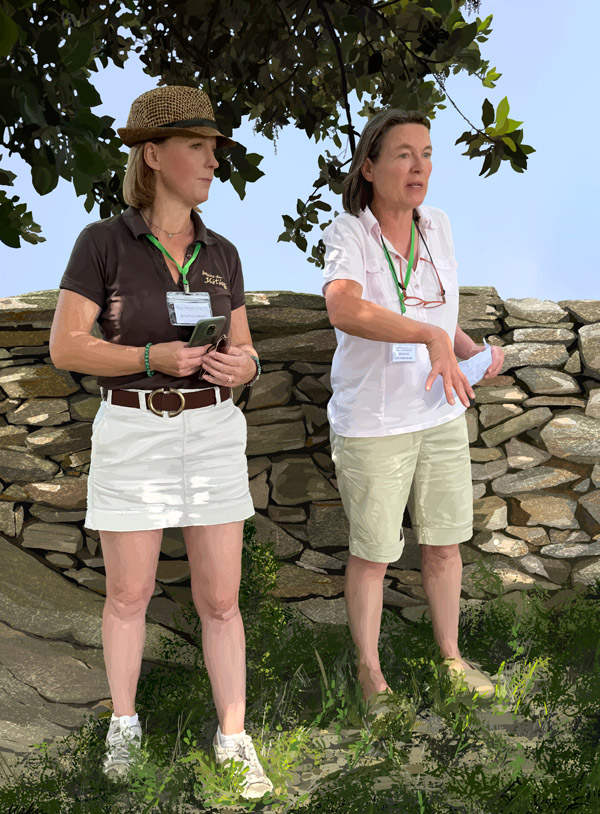
Click any image to go to the full portrait and story
In June 2024 I joined a five-day tour of the Languedoc organized by the Languedoc Interprofessional Wine Council (CIVL). It was my fourth trip there to meet and taste with producers.
Languedoc is a well-established wine region, with a rich cultural history forged by ancient political, religious, and social tectonics. It’s an incredibly diverse territory, the landscape carpeted in a mosaic of soils with a mix of aspects and elevations, washed by influences both Atlantic and Mediterranean. There’s a significant portion of organic farming, and new grape varieties tolerant of climate changes are coming online. In the last ten years, exports of AOP Languedoc wines are up 160%, and rosé wines in particular are booming, posing stiff competition with neighbors to the east. Smaller sub-regions are striving to promote their wines at home and abroad and gain recognition as appellations unto themselves. New estates are launching, sometimes led by outsiders who see enormous potential here. As older winemakers retire, they hand the reins to their daughters and sons, or seek fresh talent from outside the family to carry on their legacy. Languedoc is a mix of old soils and old souls, yet remains contemporary and vital.
Three dozen journalists came in for the events last June, mostly from Europe and North America. We spent mornings in master classes and the tasting hall, then departed after lunch to discover the territory and meet with an equally large, or larger, group of producers in the wild. These visits were convivial events, always with a rainbow of wines to taste alongside fine Mediterranean fare. It was a chance to visit casually with winegrowers in their element, but it wasn’t a perfect situation for one-on-one interviews. It was more about grasping the gestalt than deepening on specifics, and I had trouble getting quotes of depth and quality. So in the end, my travel diaries had less to say and more to show.
What I wanted to show was people.
For reasons I can’t fully explain, even to myself, I chose to focus on a handful of the women I’ve met in Languedoc. There’s Isabelle Champart, winemaker of Mas Champart in St. Chinian, and Noémie Vidil, who became winemaker when Isabelle retired. Charlotte de Béarn, of the historic Château du Jonquières in Terrasses du Larzac. Nathalie Caumette, co-owner of Domaine de l’Ancienne Mercerie, and Corinne Woodland of Domaine du Météore, both in Faugères. And Céleste Renault, director of Picpoul de Pinet AOP.
I wanted to paint portraits of these women in ways that felt specific and personal. I wanted to show reality, not gloss. I wanted to show the June light! Still, these portraits are my impressions, and making them required a series of choices about focus and contrast, what to include, what to omit. Each one took 40-60 hours to complete.
I worked principally with a single brush that’s opaque and hard-edged, requiring continuous shifts in paint color. This gives the work a saturated but also impressionistic quality, daubed and spotty. If you zoom in, the image falls completely apart. This is also true with formal Impressionism, Expressionism, even most Naturalism; get up close to a Sargent or a Turner and see: the mind makes the image at a distance. I could have smoothed and blended the texture, but mostly I left it raw, because the colorful strokes are a palimpsest, a document of the work involved. I’m in these portraits, too.
Painting them reminded me again of the old dictum: paint what you see, not what you know. I often think I know what’s I’m seeing: red sweater, green grass, pale skin, shiny bottle. But when I really look I see more than what my mind thinks it knows. If I painted a human eye as I believed it to be, it wouldn’t end up looking anything like an eye. An eye is a complicated mess when deconstructed into light, shadow, value, chroma. One sees how the lid casts a shadow, how the brown iris reads more like violet, how the white isn’t white at all. When I let myself draw what I see instead of what I know, the image becomes more real.
Paint what you see, not what you know.
I’ve published each portrait as a separate post, with commentary about their work and site. Also, aware of the limitations of web publishing, I’ve included carousels of details for closer inspection.
These results are probably not what the CIVL expected when they invited me to their event last June. This work isn’t about specific wines, industry trends, or market news. It’s not a vintage report, not about soils or climate change. I’ve written those pieces and firmly believe in their value, and I’m certain other colleagues addressed those topics handsomely in their own reports.
Instead, these portraits are a kind of offering. It’s what I can do for the region that no one else has done, and maybe no one else can do. It’s a personal vision but also an homage: to the people — or six women, at least — who make Languedoc territory what it is and what it will become.
View the portraits
Charlotte de Béarn | Isabelle Champart | Noémie Vidil | Céleste Renault | Corinne Woodland & Nathalie Caumette
All images in this series were made using an iPad Pro 12.9″ fifth generation, Apple Pencil second generation, and the app Procreate v. 5.3.14. They are © Meg Maker. Please contact me to discuss licensing or commissions. All travel and accommodations were provided by CIVL.
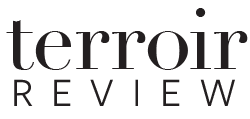
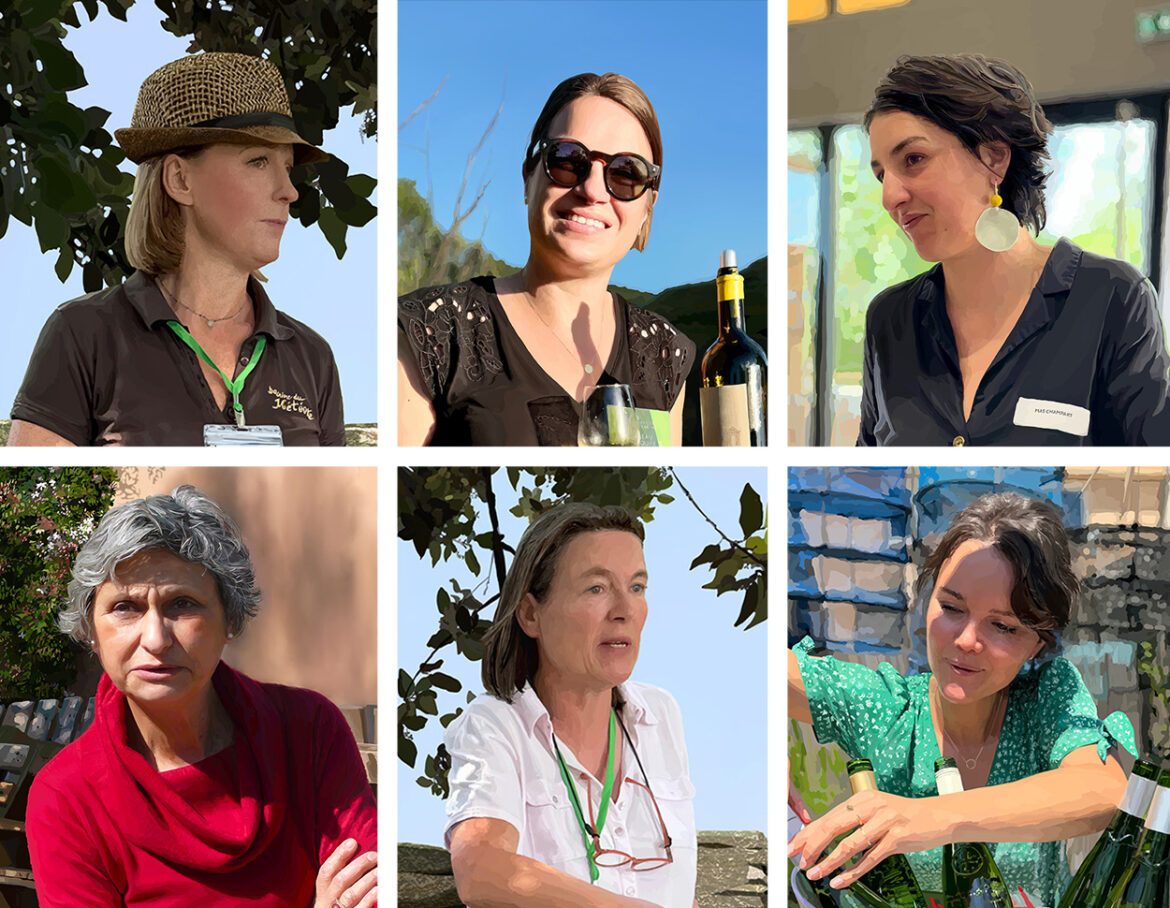
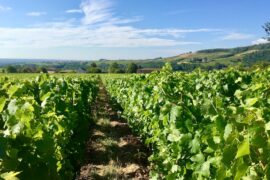
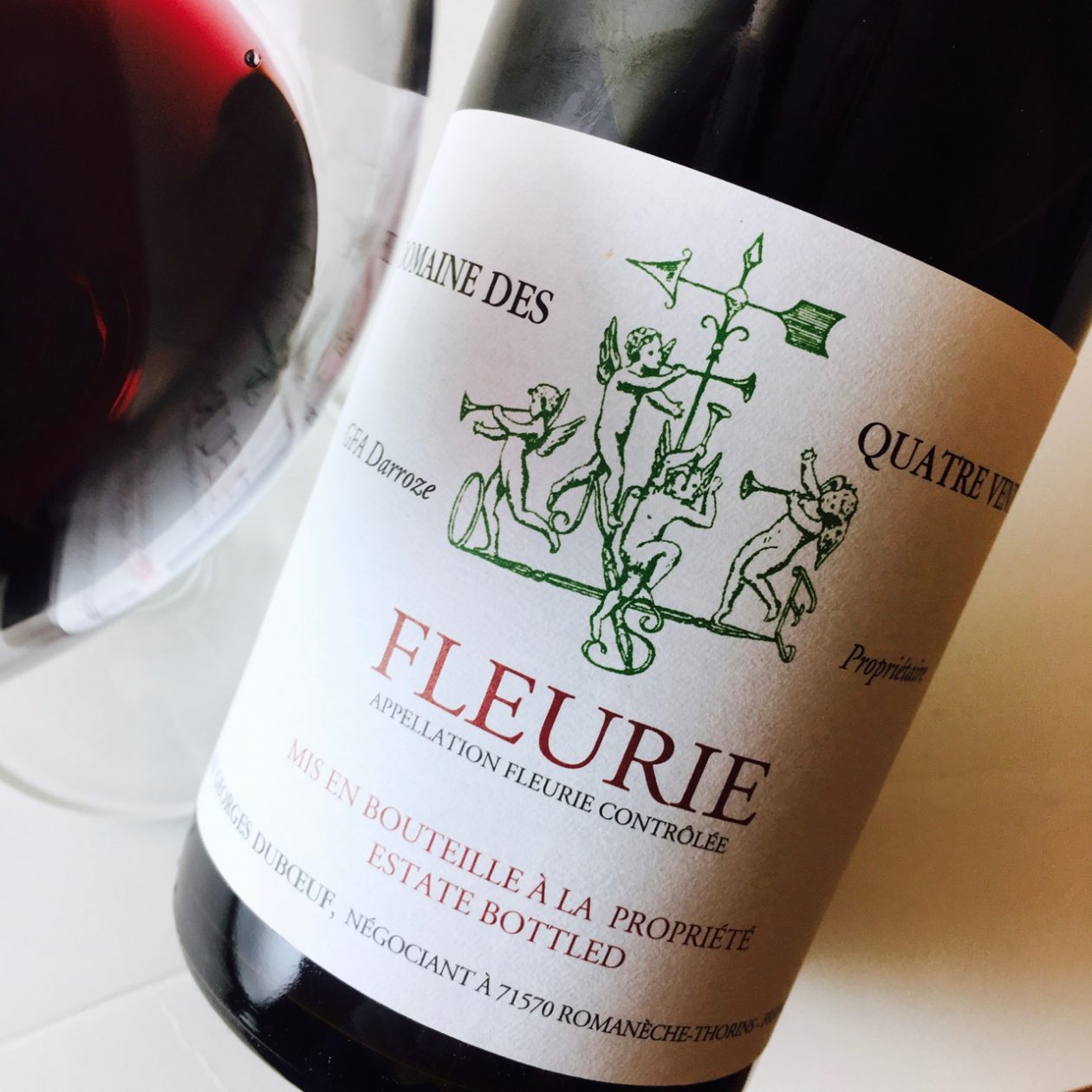
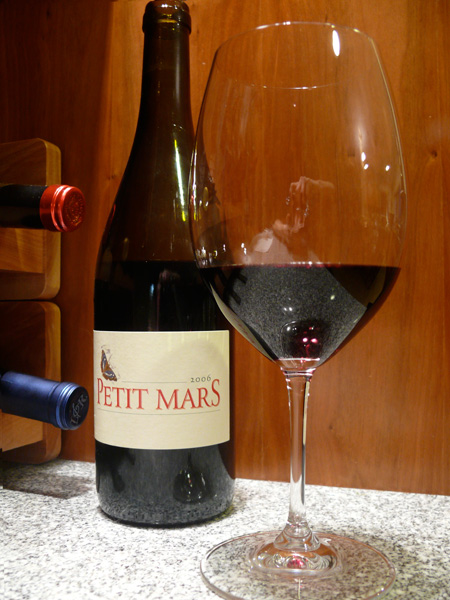
Comments are closed.